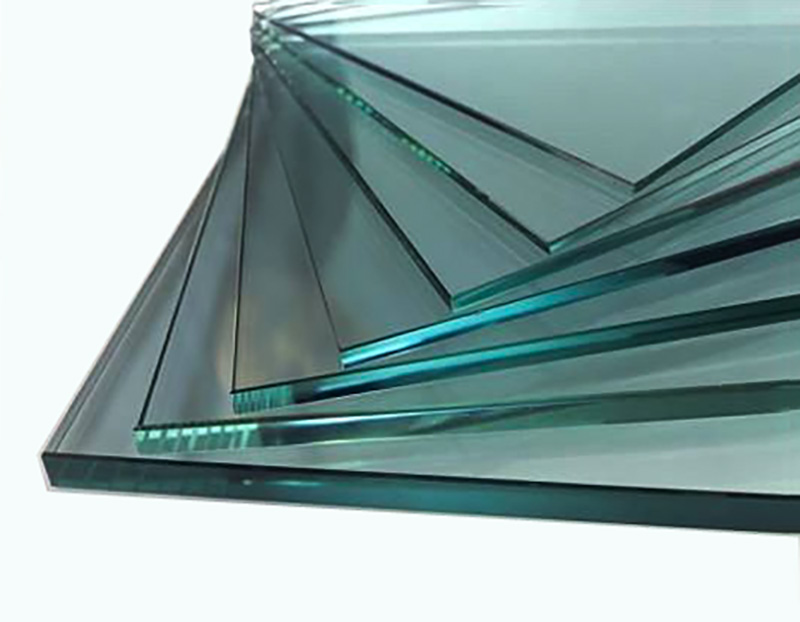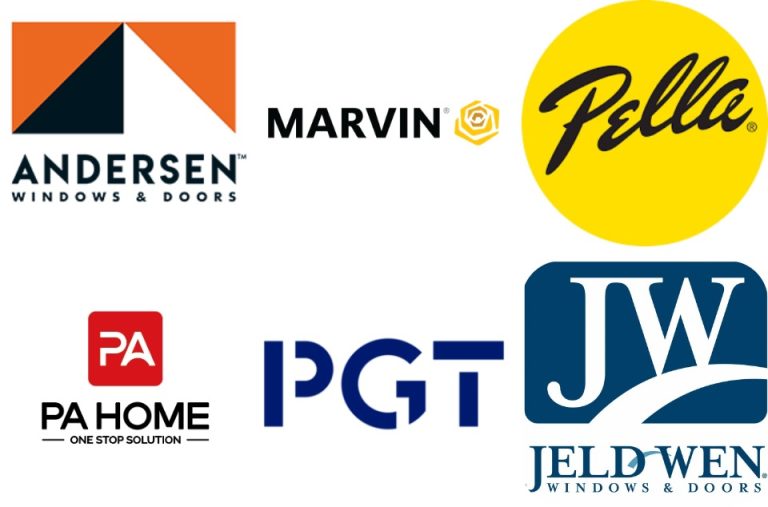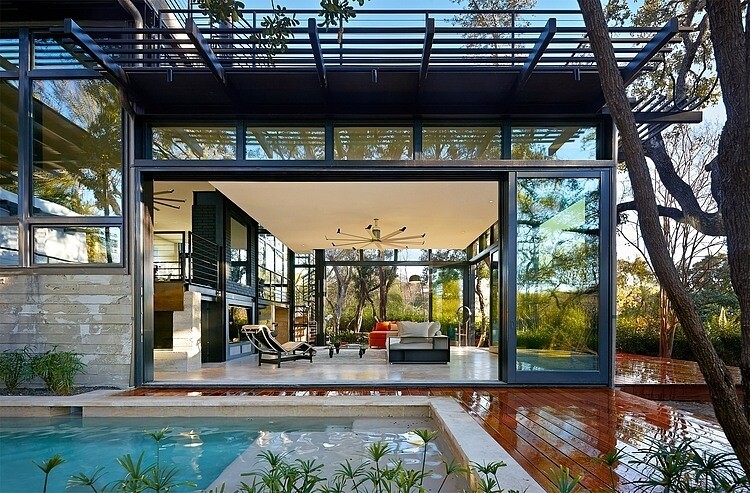Windows are a fundamental part of any home. They provide natural light, ventilation, and a view of the outside world. But, when it comes time to replace or install new windows, the price tag can often come as a shock. You might wonder, “Why are windows so expensive?” The truth is, 10 reasons contribute to the cost, making windows one of the most significant investments in your home.

1. Why Do Window Materials Drive Costs So High?
You might think a window is just glass in a frame—until you see the price tag. Then you start wondering: “What’s really in this thing?”
Window Frame: Aluminum vs. Vinyl vs. Wood
| Material | Price Range ($) | Pros | Cons |
|---|---|---|---|
| Vinyl | $300–$600 | Affordable, low-maintenance | Prone to warping or fading in extreme temperatures |
| Aluminum | $400–$1,200 | Strong, lightweight | Poor insulation properties, conducts heat and cold |
| Fiberglass | $600–$1,500 | Durable, excellent energy efficiency | Higher cost compared to other materials |
| Wood | $800–$2,000+ | Aesthetic appeal, natural insulation | Requires regular maintenance, vulnerable to rotting |
Glass: The Hidden Cost Driver
Double-pane: Standard for most homes ($50–$100 extra per window vs. single-pane).
Low-E coatings: Invisible metallic layers that block UV rays (adds $75–$200 per window).
Gas fills (Argon/Krypton): Inert gases between panes for better insulation ($100–$300 upgrade).

2. Does Energy Efficiency Make Windows More Expensive?
Let’s cut through the jargon. When a sales rep says “energy-efficient windows,” what they really mean is: “These will cost more upfront but save you money later.”
But how much more? And is it worth it? Let’s break it down.
The Energy Efficiency Upgrades That Actually Matter
Double/Triple Glazing
Double-pane: Standard today (adds $50–$150 per window).
Triple-pane: Best for extreme climates (adds $200–$400 per window).
Low-Emissivity (Low-E) Coatings
Blocks UV rays to keep heat out (or in).
Adds $75–$200 per window but cuts energy bills by 5–10%.
Gas Fills (Argon/Krypton)
Inert gas between panes for better insulation.
Argon: Cheaper ($50–$100 per window).
Krypton: More efficient but 2–3x the price.
The Payback Period: When Do You Break Even?
Typical savings: $100–$300 per year on energy bills.
Break-even point: 5–10 years for most upgrades.
Exception: If you plan to move soon, premium efficiency may not pay off.
-
💡
Pro Tip: Ask for the U-factor and SHGC ratings (lower numbers = better). Compare them to your local climate needs. These ratings can help you select windows that provide the best insulation and energy efficiency for your home.
3. Are Brand-Name Windows Worth the Premium?
You know the names—Andersen, Pella, Marvin—the “luxury brands” of the window world. But here’s the uncomfortable question: Are you paying for quality… or just a fancy logo?
Let’s peel back the marketing layers.

The Brand Premium Breakdown
Andersen 100 Series (Vinyl): $600–$900 per window
Generic Vinyl Equivalent: $300–$500 per window
That’s a 40–80% markup for the brand name alone. But what exactly are you getting?
Where Brands Earn Their Keep
R&D Budgets
Top brands invest millions in engineering (think: hurricane-resistant frames, 50-year warranties)
Example: Pella’s Impervia fiberglass windows outperform no-name brands in extreme weather tests
Consistent Quality Control
Fewer defects than budget manufacturers (industry average: 1 defect per 100 windows vs. 5–10 for cheap windows)
Installation Networks
Certified installers reduce botched jobs (which cost homeowners $1,200+ on average to fix)
-
💡
Pro Tip: 1. Consider "tier 2" brands like Simonton or PA Home—30% cheaper than luxury brands, but with solid reputations. 2. Always check the NFRC label for performance data, not just the brand name.
4. How Much Does Labor & Installation Really Add?
Here’s a dirty little secret of the window industry: You could buy the most expensive windows on the market—and still end up with leaks, drafts, and headaches if the installation is botched.
Let’s talk real numbers and risks.
The Installation Cost Breakdown
| Installation Type | Average Cost Per Window ($) |
|---|---|
| DIY (Not Recommended) | $0 |
| Handyman Special | $100–$200 |
| Certified Pro Install | $250–$500 |
| Full-Frame Replacement | $400–$700 |
Why such a huge range? Because window installation isn’t just about popping in glass—it’s about:
Flashing and waterproofing (miss this = water damage)
Insulation gaps (1/4″ error = 20% energy loss)
Structural adjustments (old homes shift over time)
The Hidden Labor Shortage Crisis
Since 2020, skilled window installers have become 30% harder to find (National Association of Home Builders data). This means:
Good installers charge premium rates ($75–$150/hour)
Cheaper crews often cut corners (using expanding foam as “waterproofing”)
When Installation Costs More Than the Windows
For a 10-window project:
Budget Windows: $4,000
Professional Installation: $5,000
Yes, the labor might cost more than the product. But here’s why it’s worth it:
Proper install doubles the lifespan of windows
Prevents $5,000+ water damage repairs later
-
⚠️
3 Red Flags of Bad Installers: 1. "We don’t need permits" (most jurisdictions require them) 2. "One-day job!" (quality installs take 2–3 days for 10 windows) 3. "No references from jobs >3 years old" (problems take time to show)
5. Why Are Custom Windows More Expensive than Standard Windows?
You fell in love with those arched, 100-year-old windows in your historic home—until you got the quote. “Wait… this one window costs more than my entire bathroom remodel?”
Welcome to the world of custom windows, where uniqueness comes with a luxury price tag. Here’s why.
The Custom Window Cost Breakdown
| Window Type | Average Cost ($) |
|---|---|
| Standard Vinyl (Off-the-Shelf) | $300–$600 |
| Semi-Custom (Modified Sizes) | $700–$1,200 |
| Full Custom (Unique Shapes/Materials) | $1,500–$5,000+ |
What You’re Really Paying For:
The "One-Off" Tax
No bulk production discounts
Manual labor replaces assembly lines (hand-cutting glass, custom welding)
Example: A curved window requires 8+ hours of specialized labor vs. 30 minutes for a standard window
Material Waste
Factories optimize standard sizes to use 95% of materials
Custom jobs often waste 20–40% of materials (you pay for the scraps too)
The Architect Effect
Historic districts often require custom windows to match original specs
Preservation approvals add months to timelines (and $$$ to your bill)
-
💡
3 Ways to Save on Custom Windows: 1. "Semi-Custom" Compromises: Modify standard sizes slightly (e.g., 35.5" instead of 36") to avoid full custom pricing. 2. Composite Materials: Fiberglass or vinyl that mimics wood at 60% of the cost. 3. Salvage Yards: Architectural salvage shops often have vintage windows that can be refurbished.
6. Do Building Codes & Regulations Inflate Prices?
You might assume a window is just a hole in the wall with glass—until your contractor starts talking about “impact ratings,” “egress requirements,” and “U-factor compliance.” Suddenly, your simple window replacement feels like filing taxes.
Here’s how regulations quietly add 15–40% to your project cost.
The Hidden Cost Drivers
1. Hurricane Zones = Bulletproof Pricing
Miami-Dade County requires windows to withstand 150 mph winds and flying 2x4s
Impact-resistant glass adds $200–$800 per window
Reality check: If you’re inland, these upgrades may be overkill
2. Energy Code Creep
2021 IECC standards forced 60% of US counties to upgrade window specs
New compliance often requires:
Triple-pane in northern states (+$300/window)
Low-E coatings everywhere (+$150/window)
3. Fire Escape Math
Bedroom windows must meet 5.7 sq. ft. opening (egress rules)
Enlarging openings = $1,500+ in framing work per window
The Permit Paradox
Cities like San Francisco charge $400+ per window just for inspection fees
Rural areas? Often zero permits required
Pro tip: Always check local rules before quoting—we’ve seen $5,000 projects balloon to $15,000 post-permit
-
💡
Key Takeaway: Regulations account for 20–60% of window price differences between regions. Always ask: 1. What codes actually apply to my home? 2. Are there alternative compliance paths? 3. Can I phase upgrades to spread costs?
7. Are High-End Hardware & Features Worth It?
You wouldn’t pair a Ferrari engine with bicycle tires—so why splurge on premium windows only to cheap out on the hardware? But here’s the million-dollar question: When does upgraded hardware actually matter, and when is it just a profit booster for manufacturers?
Window Hardware: The Silent Game-Changer
1. Hurricane Zones = Bulletproof Pricing
German (Roto, Siegenia): $150–$300 per window
Lasts 25+ years, smooth operation
Weathertight seal even after 50,000 cycles
Generic Chinese: $30–$80 per window
Starts sticking within 2–5 years
3x higher failure rate in cold climates
2. The Operator Arms You Never Notice
Cheap tilt-turn mechanisms fail first (avg. replacement cost: $225)
Premium models include brass gears instead of plastic
3. Smart Window Tech: Gimmick or Genius?
Electrochromic (self-tinting): Adds $1,200–$2,500 per window
Saves 20% on cooling bills in sunny climates
ROI: 12+ years (better for commercial than residential)
Sensor Alarms: $75–$150 per window
Only useful if integrated with security system
The Permit Paradox
Cities like San Francisco charge $400+ per window just for inspection fees
Rural areas? Often zero permits required
Pro tip: Always check local rules before quoting—we’ve seen $5,000 projects balloon to $15,000 post-permit
-
✅
Spend your money where it counts: 1. Priority 1: Heavy-duty hinges in high-use windows (especially second-floor) 2. Priority 2: Multi-point locking systems for ground-floor security
-
❌
Skip: Fancy finishes (internal brass looks nice but doesn’t perform better)
8. How Does Supply Chain Chaos Affect Window Prices?
Remember when toilet paper was hard to find in 2020? Well, windows had their own pandemic drama—and we’re still feeling the aftershocks. Here’s why your window quote might still include a “supply chain surcharge.”
The Post-Pandemic Price Hangover
1. Glass Shortages Aren’t Over
2022 Crisis: Natural gas prices (used in glass production) spiked 300% in Europe
Today’s Reality: US window glass costs 18-25% more than pre-COVID
Pro Tip: Order 3+ months ahead to avoid rush fees
2. Shipping Delays = Hidden Fees
Pre-COVID: 6-8 week lead times
2024: Some manufacturers still quote 12-16 weeks
Expedited shipping adds $75–$200 per window
-
✅
3 Strategies to Beat Supply Chain Costs: 1. Buy Off-Season (November–February) when demand drops 30% 2. Choose Local Manufacturers (saves 4+ weeks of ocean freight delays) 3. Lock Prices Early (many contractors honor quotes for 90 days)
9. Why Do Replacement Windows Cost More Than New Construction?
You’d think swapping out an old window would be simpler than installing one in a brand-new house—but surprise! Replacement windows often come with hidden demolition taxes that can double your project cost. Here’s what contractors don’t always explain upfront.
The Replacement Window Cost Surprises
1. The "Surprise Rot" Factor
60% of replacements uncover hidden water damage ($500–$2,000 extra per window)
Classic Scenario: Removing old wood frames reveals rotted sheathing
2. The Weight of History
Pre-1978 homes require lead-safe protocols (adds $150–$400 per window)
Historic moldings need hand-cutting (vs. new construction’s uniform sizes)
3. Full-Frame vs. Pocket Replacement
| Window Type | Full-Frame | |
|---|---|---|
| Cost | $600–$1,200/window | $300–$700/window |
| When Needed | Rotted frames, structural changes | Sound existing frames |
| Time | 2–3 hours/window | 45 mins/window |
10. Can You Get Quality Windows Without Overpaying?
Let’s end on hope: Yes, you can beat the system. After dissecting all the hidden costs, here’s how to secure premium windows at fair prices—without becoming a DIY disaster.
Timing Is Everything
Best Month to Buy: January–February (contractors are slow; manufacturers offer discounts)
Worst Month: April–June (peak season = 15–20% price hikes)
Decoding the Contractor Quote
| Red Flags | Green Flags |
|---|---|
| "Prices good for 24 hours" | Written 90-day price lock |
| No itemized labor/materials | Clear breakdown of glass type, frame grade |
| "Lifetime warranty" (fine print: "prorated after 10 years") | Transferable 20-year non-prorated warranty |
-
✅
3 Negotiation Tactics That Work: 1. The Bulk Discount: "If I do 8+ windows, what’s your best price per unit?" 2. The Price Match: "Competitor X offers the same window for $200 less—can you beat it?" 3. The Off-Season Play: "I’m flexible on timing—what’s your winter rate?"
Conclusion: Are Expensive Windows Worth It?
At the end of the day, windows are a long-term investment—not just a purchase. The right ones can slash your energy bills, boost your home’s value, and even improve your daily comfort. But the wrong ones? They’ll drain your wallet with repairs and inefficiency.
If you are struggling to choose the right windows, contact PA Home and let our window experts answer your questions.
FAQs
Window prices typically range from $300 to $1,200 per window, depending on material, size, and type.
Expensive windows, often offering better energy efficiency, durability, and aesthetics, can be worth the investment if long-term savings and quality are priorities.
Yes, if you prioritize features like energy efficiency, noise reduction, and enhanced curb appeal. They can also increase home value and save on energy bills.
Top high-end window brands include Pella, Marvin, Andersen, and Loewen, known for their durability, aesthetics, and energy-efficient features.
For a 2,000 sq ft house, window costs can range from $5,000 to $15,000, depending on the number, type, and material of windows.


